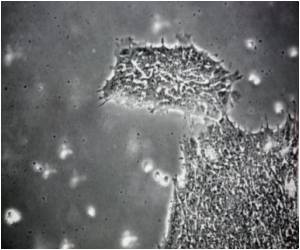A structural defect in skin cells can contribute to allergy development, including skin and food allergies, reveals a new study.

"Desmoglein 1 is best understood as the 'glue' that holds the outer layer of human skin together," said Kathleen Green, Joseph L. Mayberry, Sr., Professor of Pathology and Toxicology at Northwestern University Feinberg School of Medicine. "Historically, the molecule was mainly believed to have a structural role: this adhesion between cells contributes to the physical barrier that regulates water loss and also acts as the body's major defense against environmental elements. But there are a large number of molecules that form this barrier, distributed in a highly-patterned manner, prompting our team to hypothesize that they do more than just mediate adhesion."
Green's group at Northwestern worked with an international team that analyzed clinical data from two families, combined with genetic analysis including next-generation DNA sequencing and light and electron microscopy, among other techniques. They found that when desmoglein 1 does not properly function or does not exist, the resulting barrier disruption can affect the immune response, and consequences can be severe.
"This work is also significant because it suggests that in addition to impairing the physical barrier, loss of desmoglein 1 may more directly regulate expression of genes that control the immune response and contribute to allergy," says Green. "Conceptually, it allows us to build on previous studies and make conclusions about the importance of other structural proteins in the skin barrier."
Green notes that the finding, combined with recent published data, could eventually lead investigators to discover further connections between defects in structural molecules and less severe allergies such as atopic dermatitis, eczema and more common food allergies.
Source-Eurekalert















